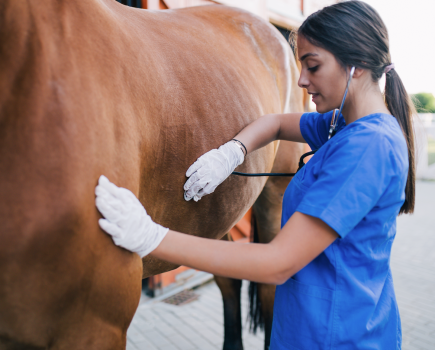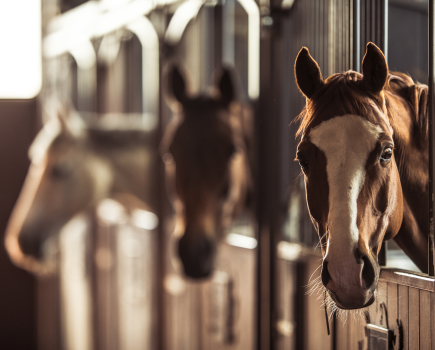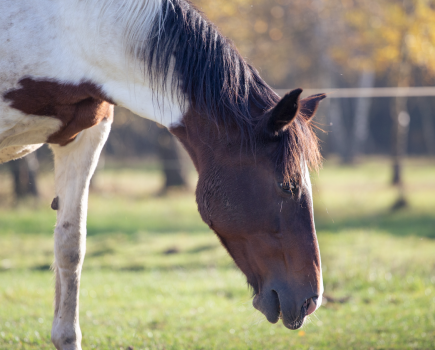Checking your horse’s temperature, pulse and respiration (TPR) is an important task and one that needs to be done correctly and safely. It’s a good idea to do it regularly, when your horse is at rest, so you’re familiar with what’s normal for him.
Here’s how it’s done.
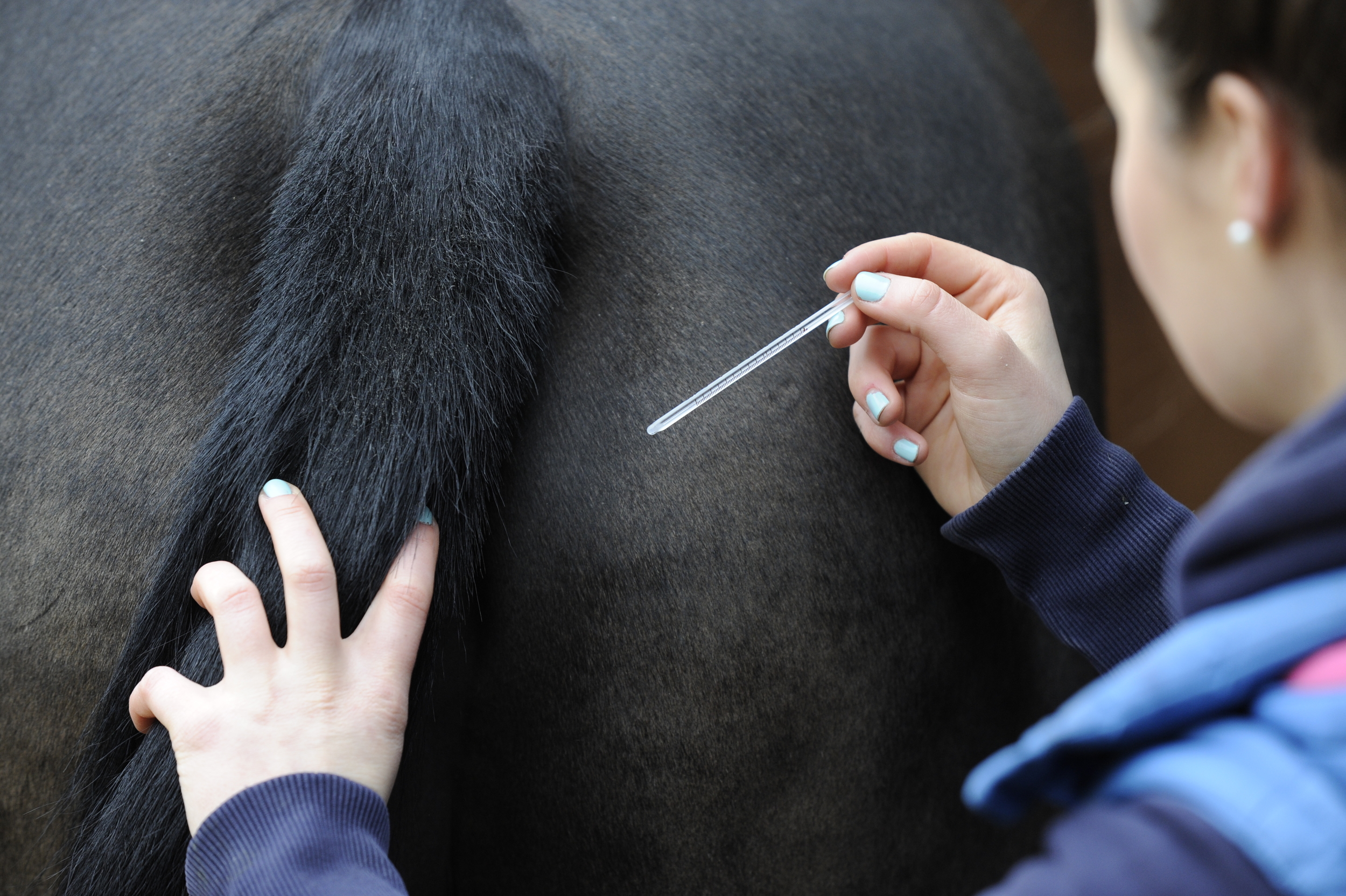
Taking your horse’s temperature requires you to work in his hind leg region and insert a thermometer into his bottom. When doing this, take care as it can result in the most even-tempered horse kicking out
Temperature
To take your horse’s temperature you’ll have to work in his hind leg region and insert a thermometer into his bottom. Be careful as this could result in even the most even-tempered horse kicking out.
- Ensure your horse is wearing a head collar with lead rope and that an experienced handler has control of his head. Also ensure you are working in a well lit area.
- Approaching on the left side of the horse (standing parallel to his trunk), gradually move down the side and lift his tail with your left hand.
- Gently insert your well-lubricated thermometer (the end should be coated liberally in Vaseline) into his bottom. You’ll need to hold it against the inside wall otherwise you could just be taking the temperature of his dung! Steadily hold the thermometer in this position for 30 seconds if you’re using a traditional mercury thermometer or, if it is a digital one, until it bleeps.
- Remove the thermometer, release the tail, move slowly and safely away and read and record the temperature (it is amazing how quickly you can forget the figure so write it down)
The normal temperature of a horse is between 37.5 and 38.5 degrees Celsius.
Pulse
The facial arteries run on either side of your horse’s head and cross over the jaw bones, about a third of the way between the angle of the jaw and the muzzle. Put a head collar on your horse with lead rope attached and ensure you have someone to restrain him for you. If you cup your fingers and roll them round the inside of the jaw bone, you will come against the plump tubular structure of the artery and vein running together. Press this gently against the inside of the jaw bone and you will feel a distinct pulse. Count the pulse over 30 seconds and double this to give you the rate per minute. The normal pulse for an average sized adult horse is around 32.
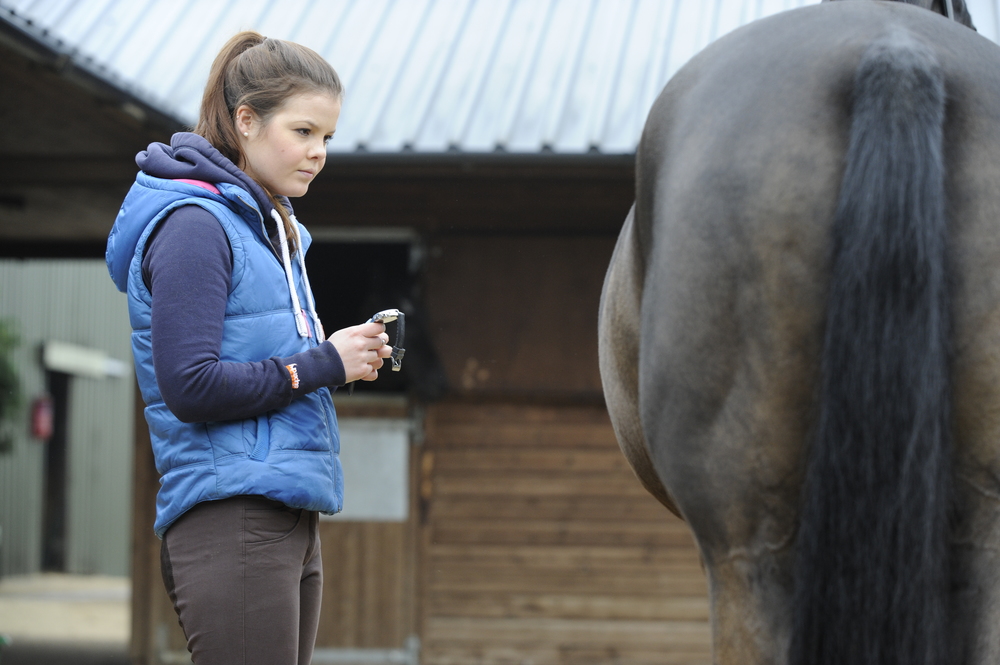
To check your horse’s respiration rate you’ll need to stand to the side of him, a few feet away and watch his ribcage rising and falling
Respiration
Stand to the side of your horse, a few feet away and watch his ribcage rising and falling. A cycle of one rise and one fall of the ribcage constitutes one breath. Time the number of breaths he takes over 30 seconds. Double this number and you have the number of breaths per minute. The respiration rate for a horse at rest is around 12 to 15 breaths per minute.




